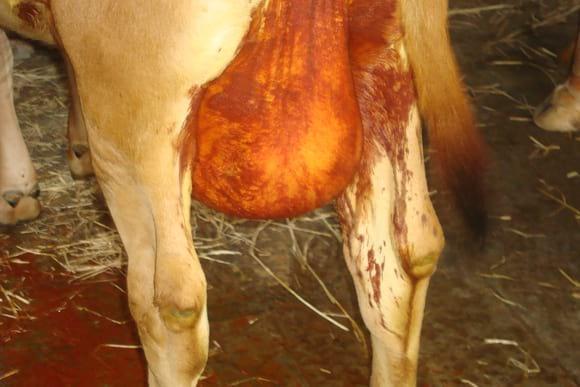9 de julio de 2020
1. Nair, M N B. 2005.(Edt.) Contemporary relevance of Ethno-veterinary medical traditions of India. Proceeding of National workshop Oct. 17th& 18th 2005, Kediyur hotel, Udupi, Mangalore, Karnataka
2. Nair M.N.B. &P.M. Unnikrishnan 2010. Revitalizing ethnoveterinary Medical tradition: A perspective from India (Chapter 5) in David R. Katerere&DibungiLuseba (Eds) Ethnoveterinary Botanical Medicine-Herbal medicine for animal health. CRC-Press, Taylor & Francis group, USA.
3. Nair M. N. B.& G. Hariramamurthy 2010. Access and Benefit Sharing and the In Situ Protection of Traditional Knowledge. Policy Matters 17:185-188
4. Nair M N B&N.Punnyamurthy.(Edt) 2010. Ethno-veterinary practices. Proceeding of the International conference on Mainstreaming Traditional wisdom on livestock keeping and herbal medicine for sustainable rural livelihood. TANUVAS & I-AIM South Zone cultural center. Thanjavur, India Jan 4th -6th .
5. G GGangadharan&M N B Nair. 2010. Nature & perspective of Indian Health traditions with emphasis on the ancient veterinary sciences. Proceeding of the International conference on Mainstreaming Traditional wisdom on livestock keeping and herbal medicine for sustainable rural livelihood. TANUVAS & I-AIM South Zone cultural center. Thanjavur, India Jan 4th -6t
6. Nair M N B 2010. Access & benefit sharing in the context of traditional Knowledge &biocultural protocol. Proceeding of the International conference on Mainstreaming Traditional wisdom on livestock keeping and herbal medicine for sustainable rural livelihood. TANUVAS & I-AIM South Zone cultural center. Thanjavur, India Jan 4th -6t
7. Nair, M N B& S Raneesh 2011. “Documentation and Assessment of Ethno-veterinary Practices – A strategy for mainstreaming local health traditions for sustainable veterinary care” in India in Testing and Validation of Indigenous knowledge, the COMPAS experience from South India.( Edts) A V Balasubramanian, K Vijayalakshmi, Shylaja R Rao and R AbarnaThooyavathy. CKS Chennai pp 60-94
8. N.Punnyamurthy, Kumar.S.K.,&M N B.Nair 2012. Hand book on ethno-veterinary Practices. I-AIM, Bangalore (version 2. September 2012)
9. Nair, M.N.B. 2006. Contemporary relevance of ethno-veterinary practices, documentation and assessment Ethno-veterinary Medicine Conference, Harvesting Knowledge, Pharming Opportunities, 14 – 15 September 2006, Writtle College, Chelmsford, Essex
10. Nair, M.N.B 2006. Ethno-veterinary medical traditions and methodology for their documentation, assessment and promotion Prosperity and Poverty in a Globalized World –Challenges for Agricultural Research
11. Nair, M. N. B, Dr. S.K.Kumar and N.Punniamurthy.2014. Progress report of the project “Training of Trainers on Popularising Ethno-veterinary Practises in order to Improve Milk Quality in Smallholder dairy farming in South India” Final report on the project support from ETC for Technical training programme
12. Nair M N B, N. Punniamurthy & S.K. Kumar, 2015 Role of Ethno-Veterinary Practices (EVP) in reduction of Antibiotic residue – a case study. Paper presented in the International conference “Role of veterinary Ayurveda and ethno-veterinary practices in reducing use of antibiotic and other chemical veterinary drug in dairy farming” April 30th& May 1, 2015 Trans-Disciplinary University (TDU),74/2 Jarakabandekaval, Attur post, via Yelahanka, Bangalore-560 064, Karnataka, India
13. Nair M N B, N Punniamurthy* and S K Kumar 2017. Ethno-veterinary practices and the associated medicinal plants from 24 locations in 10 states of India RRJVS/Journal of VeterinarySciencesVol.3(2),16-25.
14. Nair M N B, Punniamurthy N, Mekala P, Ramakrishnan N and Kumar SK.2017. Ethno-veterinary Formulation for Treatment of Bovine Mastitis, RRJVS/ Journal of Veterinary Sciences S1. 25-29.
15. Punniamurthy N ,Sujatha P L , Preetha S P & N. ramakrishnan. analysis of the mechanism of action by molecular docking studies of one ethno-veterinary herbal preparation used in bovine mastitis IJANS. ISSN(P): 2319-4014; ISSN(E): 2319-4022 Vol. 6, Issue 5, Aug – Sep 2017; 23-30
16. Nair MNB, Punniamurthy N, Seethakempanahalli K. Role of ethno-veterinary practices (EVP) in reducing antimicrobial resistance in livestock production systems: a field experience. Planta Med 2015; 81: SL3C_06 (Abstract)
17. N Punniamurthy Natesan1, M Nrayanan B Nair2A decade of clinical research and applications of ethnoveterinary knowledge in India – the pragmatic way of facilitating medicinal plants to replace synthetics in animal health and productionPlanta Med 2016; 82(S 01): S1-S381 DOI: 10.1055/s-0036-1596155 ( Abstract)
18. Punniamurthy, N. Ramakrishnan,N. Nair MNB *and Vijayaraghavan,S* In-vitro antimicrobial activity of ethno-veterinary herbal preparation for mastitis.Dairy and Vet Sci J 3(2): JDVS.MS.ID.555607 (2017)
19. Suresh Bharat, Punniamurthy N and Nair M N B 2018, DhanwantharamKashayam for preventing post-partum complication in cross bred cows. Dairy and Vet Sci J 5(4):JDVS MS 555666 (2018)
20. Kumar S K1, Deepa P M2, Punnimurthy N3, MNB Nair4 2018. Prevention of mastitis in cattle during dry period using herbal formulation. RRJVS | Volume 4 | Issue 1 | June, e-ISSN:2581-3897
21. M N Balakrishnan Nair 2019.Ethnoveterinary science and practices for reducing the use of antimicrobial and other veterinary drugs in veterinary practices. EC veterinaru sciences Reco.01 16-17
Books:
1. Nair, M N B .Wood anatomy and major uses of wood – Published by Faculty of Forestry, University Putra Malaysia, 1998
2. I have prepared the text and illustrations dealing with plant anatomy for Biology Textbook for class XI and XII for the NCERT, 1987-99.
3. Nair, M N B. N. Punnyamurthy. &Kumar.S.K2016. Ethno-veterinary treatment Guide. TDU, Bangalore (Malayalam)
4. Kumar. S.K., M N B Nair & N. Punnyamurthy 2016. Primary health care of animals and medicinal plants. TDU, Bangalore (Kannada)
5. Girish Kumar V. &M N B Nair 2016. Medicinal plants & primary health care TDU, Bangalore.ISBN:978-93-84208-02-08
6. Punnyamurthy N, Nair M N B. & Kumar. S.K 2016. User Guide on Ethno-veterinary Practices. TDU, Bangalore. ISBN978-93-84208-03-05
Edited Volumes:
1. Nair, M.N.B. & Nathan Ganapathy 1998. Proceedings: Medicinal plants: Cure for the 21st century. Faculty of Forestry, Universiti Putra Malaysia, Serdang,
2. Nair, M.N.B.&MohdHamamiSahri, 1998. .Proceedings: Sustainable management of Non-wood forest products. Universiti Putra Malaysia Press, Serdang. Contemporary relevance of ethnoveterinary medical traditions of India, FRLHT Bangalore
3. Nair, M.N.B. 2005. Contemporary relevance of ethnoveterinary medical traditions of India. Proceedings on the national seminar Oct 17-18. FRLHT, Bangalore 2005
4. Nair M.N.B. and N.Punyamurthy 2010 (Eds.) Proceeding of the International workshop on Ethno-veterinary Practices at Thanjavur) – I-AIM, Bangalore
Asparagus recemosus root 250 grams /day very good galactogoge
Ipomia mauritiana extremely good - the swollen root 250 /day































